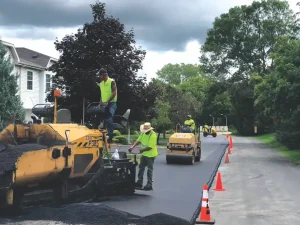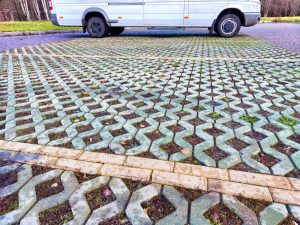The paving industry comes equipped with its own set of terminology that can be confusing to new and experienced business owners alike. Keep reading to find out the key differences of asphalt milling vs resurfacing, and how this affects your business.
Overview
Both milling and resurfacing involve the repair or renewal of a paving surface. However, the circumstances of their use and the methods they use are quite different. If you want to ensure that your paving surface is as hardy and reliable as possible, it is essential that you differentiate between the two. They come at different price points and offer different advantages. Nobody wants to overpay for something they may not have even needed in the first place.
Milling
Milling is the process of stripping and grinding off the top few layers of pavement. The depth can be specified to ensure that only the damaged or affected layers are stripped off. This leaves much of the surface still intact. Milling is typically the first step in re-installation using a hot-mix asphalt blend. It is the thing you see being done to public roads before they pour down a new section of road. It is not practical to simply pour a new layer down over a damaged surface. The new surface will simply break faster. So, milling is necessary. The area to be worked on needs to be lower than the surrounding area.
Resurfacing
Resurfacing involves replacing the top layer of asphalt with a fresh layer of pavement. This increases the lifespan of the entire surface drastically. Resurfacing is only an option if the underlying foundation is solid and undamaged. There are lots of cases where milling will need to be done before resurfacing. When resurfacing is done, a tack coat is applied first. The tack coat will bind the old foundation and existing pavement to the new asphalt being poured. Then, the new surface is applied and tamped down using industrial paving equipment. The paving company will ensure there are no bumps or warping occurring via a smoothing process. Then, and only then, is the job considered complete.
Conclusion
As you can see, milling and resurfacing require different tools to complete the job. Milling is more of a stepping stone to resurfacing than an alternative to it. Milling is not always required before resurfacing is done, which is great for you as the business owner. A professional paver will be able to tell you if milling will be necessary for the resurfacing process.
Our Services
Looking for a new asphalt parking lot or have questions on aftercare? Pro-Pave, Inc. is a premier commercial concrete and asphalt paving company serving general contractors, property managers, and HOAs in the Mid-Atlantic. We are Class A-licensed, VDOT-certified, and fully bonded/insured for jobs of all sizes.
We work with many commercial clients, including federal, state, and local governments; commercial property owners; K-12 schools; higher education institutions; military groups; retail stores; and more.
Visit our website or contact us to learn more about our services.





